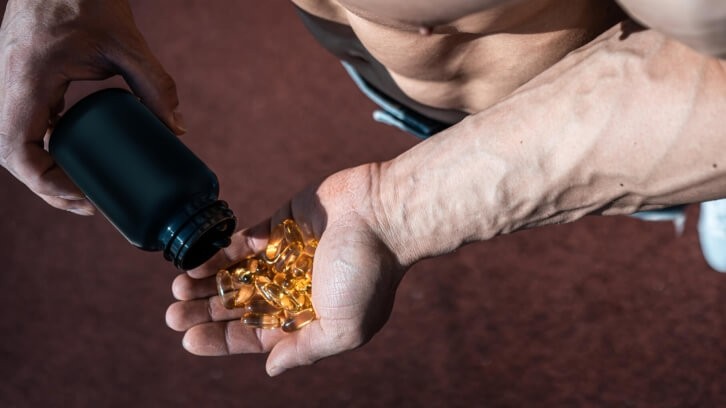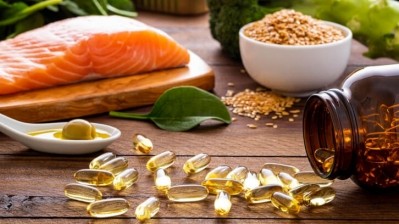Study explores best omega-3 for muscle recovery

A team of researchers led by scientists from Baylor University set out to investigate the differential effects of the two omega-3 fatty acids on exercise-induced muscle damage (EIMD), reporting that supplementation with EPA or DHA for 52 days improved certain aspects of muscle recovery but that there were no clear associated benefits of combined EPA and DHA supplementation.
“For those exposed to muscle damage multiple times per week, such as during tournaments or combat field training, [long-chain] omega-3 PUFA supplementation is a low-cost and effective strategy to mitigate the negative sequalae from EIMD,” the researchers wrote in the journal Medicine & Science in Sports & Exercise.
“EPA-biased supplementation may be best for those at low-risk of head trauma (e.g., track, swimming, recreational exercisers), whereas DHA-biased supplementation may be best for those at high-risk of head trauma (e.g., football, rugby, Special Operators).”
Omega-3s for muscle recovery
Exploration into the benefits of long-chain omega-3 fatty acids for muscle recovery is part of a wider and ongoing investigation into strategies to improve resistance to acute physiological stressors in various sporting and military contexts.
“EIMD oftentimes leads to acute, yet debilitating, muscle soreness, loss of muscle function, exercise capacity and force production,” the researchers wrote. “The EIMD-associated loss in muscle function and increased soreness are important factors to combat for athletes and military personnel as they can contribute to sub-optimal performance and increase susceptibility to injuries.”
The study noted that while exercise stress can stimulate muscular adaptations, interventions are needed to avoid inadequate recovery and maladaptation, especially in situations such as tournaments or multi-day combat operations when adaptation is secondary to recovery and performance.
Recent reviews, including one conducted by two of the authors on the current study, have highlighted the potential effectiveness of long-chain omega-3 PUFA supplementation on parameters of muscle recovery, however, the researchers acknowledged that questions remain as to “whether EPA or DHA alone is causing the observed effects or if EPA and DHA work synergistically or antagonistically”.
Illinois-based supplement manufacturer Carlson Labs provided the omega-3 supplements used in the study.
Study details
The researchers randomly assigned 30 males to receive either 4 g a day of EPA and DHA, EPA alone, DHA alone or a coconut oil placebo (PL) for seven weeks.
Participants then performed a downhill running (20 minutes, 70% VO2 max, -16% gradient) plus jumping lunges (five sets of 20 reps with two-minute rest intervals) muscle damage protocol. Indices of muscle damage, soreness, muscle function and inflammation were measured at baseline and throughout recovery. The omega-3 index was used to track tissue EPA and DHA status.
“The results of the present study suggest that 4 g·d-1 EPA mitigates the decline in muscle function as measured by jump performance, power metrics and leg press; and reduced soreness compared to PL,” the researchers reported. “Similarly, 4 g·d-1 DHA significantly preserved leg strength and attenuated muscle soreness within 24H and 48H, respectively. EPA + DHA did not clearly enhance recovery.”
After supplementation, the omega-3 index was significantly higher than placebo in all experimental groups, and measures of inflammation, range of motion and muscle swelling were similar between groups.
“So, regarding LC omega-3 PUFA supplementation and exercise-induced muscle damage, is it EPA or DHA? The answer: both,” the researchers concluded, adding that “equivalent dosing of EPA+DHA may blunt the performance effects observed in EPA or DHA alone”.
They suggested that future studies follow a more controlled eccentrically based exercise protocol, strictly control dietary intake (especially omega-6 intake) and physical activity, and provide a more realistic long-chain omega-3 PUFA dose of around 2 g·d-1 over a longer 10-week period.
Source: Medicine & Science in Sports & Exercise
doi: doi.org/10.1249/MSS.0000000000003332
“Long-Chain Omega-3 Fatty Acid Supplementation and Exercise-Induced Muscle Damage: EPA or DHA?”
Authors: Jeffery L. Heileson et al.
















